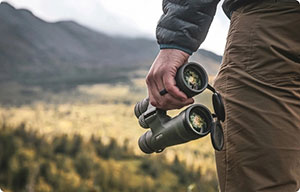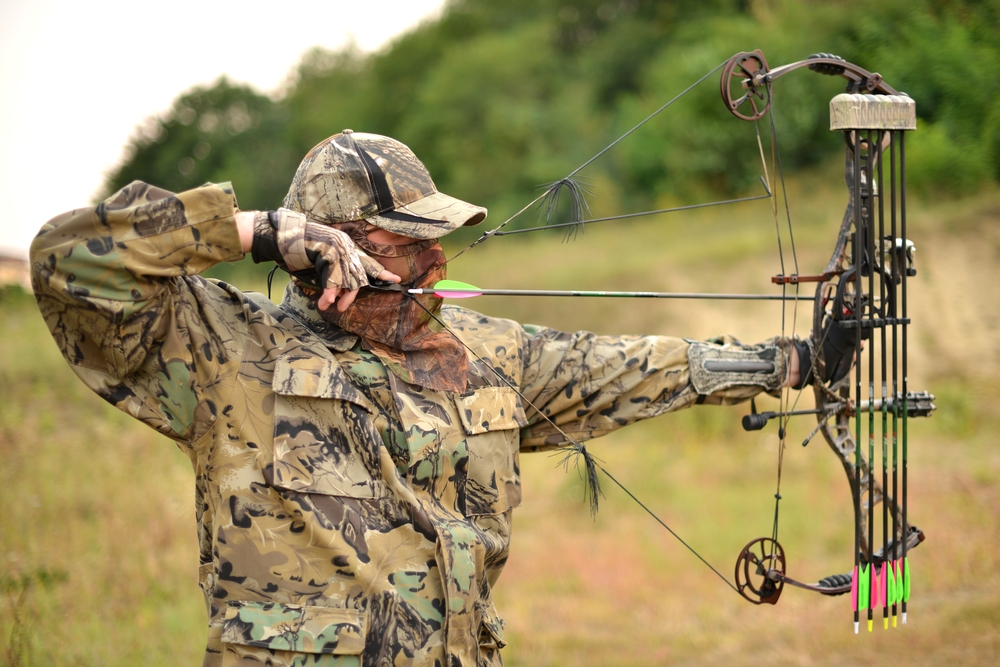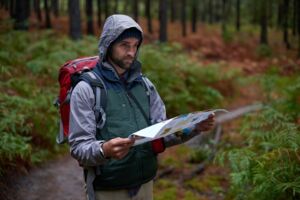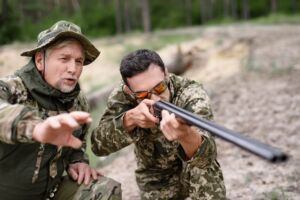Alberta’s vast wild spaces and diverse terrain provide an unparalleled backdrop for the ancient and challenging discipline of archery. Whether you’re drawn to the precision of target shooting, the immersive experience of 3D archery courses, or the primal thrill of bowhunting, the province offers a wealth of opportunities for archers of all skill levels.
This Alberta archery guide dives into everything you need to know to pursue your passion, from understanding Alberta’s archery regulations and selecting the right equipment to finding practice locations and connecting with the province’s vibrant archery community.
Table of Contents
The Enduring Appeal of Archery in Alberta
Archery embodies a unique blend of skill, discipline, and a deep connection to the outdoors. In Alberta, this pursuit takes on many forms, each offering its own rewards. For many, it’s the quiet concentration required to hit a distant target, the satisfaction of a perfectly executed shot, or the challenge of navigating a wilderness course. For bowhunters, it represents an ethical pursuit of game, demanding patience, stealth, and a profound respect for wildlife. The allure of Alberta’s landscapes further enhances the experience, providing stunning backdrops for practice and incredible environments for hunting. It’s a sport that builds character, hones focus, and provides a continuous journey of learning and improvement.
Understanding Archery Disciplines and Paths
Archery is a multifaceted sport with various disciplines, each with its unique focus and requirements. Alberta offers avenues to explore most of these.
Target Archery
This fundamental discipline focuses on precision and consistency.
- Indoor Target Archery: Typically shot at shorter distances of 18 to 25 metres using lighter bows, indoor target archery is an excellent way to practice year-round, refine technique, and compete in leagues or tournaments. Many clubs across Alberta offer indoor ranges, providing a climate-controlled environment that’s perfect for honing your skills regardless of the weather outside.
- Outdoor Target Archery: This involves shooting at greater distances of up to 90 metres or more, often on a range or a field. This discipline typically incorporates various natural conditions, such as wind, light, and uneven terrain, adding a layer of complexity and challenge to the shot.
3D Archery
Designed to simulate hunting scenarios, 3D archery is incredibly popular, especially among bowhunters, and it provides a dynamic, engaging experience.
- Foam Animal Targets: Archers shoot at life-sized foam animal targets (e.g., deer, elk, bears, turkeys) strategically placed at unmarked distances within a natural setting, such as a wooded area or open field. The realistic nature of the targets and their placement helps archers visualize shot placement on actual game.
- Varying Terrain: Courses are often designed to wind through challenging and varied terrain, mimicking the types of environments a hunter might encounter in the wild. This helps archers practice shooting from different positions, including uphill, downhill, kneeling, and around obstacles.
- Skill Development: Participating in 3D archery is a great way to develop crucial skills like accurate range estimation, often without a range finder, as well as shooting from awkward positions, judging angles, and practicing ethical shot placement on anatomically correct targets. Many clubs across Alberta host regular 3D shoots and events throughout the warmer months.
Field Archery
A less common but equally rewarding discipline that combines elements of traditional target and 3D archery, testing an archer’s adaptability.
- Walk-Through Courses: Archers navigate a course with various targets set at different, sometimes unknown, distances and angles. Targets may vary in size and design, requiring archers to adjust their aim and technique for each unique shot.
- Strategic Shooting: This discipline demands significant adaptability and quick decision-making for each shot, as conditions and distances are constantly changing. It’s a true test of an archer’s versatile shooting abilities.
Bowhunting
The ultimate test of an archer’s skill, patience, and ethical commitment. Bowhunting requires extensive practice, a deep understanding of wildlife, and strict adherence to regulations.
- Early Archery Seasons: Alberta offers specific archery-only seasons for a variety of big game species, including deer, elk, and moose. These early seasons typically occur before the general rifle seasons commence, providing bowhunters with a unique opportunity to pursue game in a quieter, less pressured environment, emphasizing stealth and close-range encounters.
- General Seasons: Bowhunters are also permitted to hunt during general rifle seasons, provided they adhere to all applicable regulations concerning the species, Wildlife Management Unit (WMU), and close-range encounters.
- Emphasis on Ethics: Bowhunting inherently demands close-range shots and precise arrow placement into vital areas for a swift and humane harvest. This necessitates a heightened level of ethical consideration, extensive practice, and a profound respect for the animal.
Archery Hunting Regulations in Alberta
For those venturing into bowhunting, a comprehensive understanding of Alberta’s specific archery regulations is paramount. These rules are designed to ensure fair chase, promote wildlife conservation, and guarantee safety for all outdoor enthusiasts.
Licensing and Permits
- Wildlife Identification Number (WIN) Card: As with all forms of licensed hunting in Alberta, possessing a valid WIN card is absolutely necessary. This unique lifetime identifier must be obtained before purchasing any hunting licenses.
- Alberta Sportfishing & Hunting License: To legally bowhunt, you will need to acquire the general big game hunting license for the specific species you intend to pursue.
- Bowhunting Permit: In addition to your regular big game license, a dedicated bowhunting permit is required for all conventional bowhunters (those using recurve, longbow, or compound bows). This permit formally acknowledges that you are utilizing archery equipment for your hunt.
- Crossbow Use: The regulations surrounding crossbows are specific. Generally, crossbows are legal for hunting during general rifle seasons. However, for archery-only seasons, a crossbow may only be used by an eligible handicapped hunter who has obtained a specific medical exemption permit from Alberta Fish and Wildlife. These individuals must carry all required documentation while hunting. Current regulations also stipulate minimum draw weights for crossbows used for hunting.
Authorized Bow and Arrow Specifications
The official Alberta Guide to Hunting Regulations serves as Alberta’s archery guide, outlining the specific requirements for legal hunting equipment. Adhering to these specifications is not only a legal obligation but also ensures ethical and humane harvesting.
Authorized Bow
Must be held, drawn, and released by muscular power.
Minimum Draw Weight
For conventional bows, the bow must have a minimum draw weight of not less than 15.8 kg to draw an arrow of 71 cm. To its head. This ensures sufficient kinetic energy for a humane harvest. Always verify the most current regulations, as these specifications are subject to annual updates..
Authorized Arrow
Each arrow must be fitted with a broadhead, the design of which is also regulated.
Broadhead Type
Both fixed-blade and mechanical/expandable broadheads are typically permitted, but they must meet specific minimum cutting diameter specifications. Fixed-blade broadheads have stationary blades, while mechanical broadheads deploy their blades upon impact, creating a larger cutting surface. It’s important that broadheads are exceptionally sharp and structurally durable.
Arrowhead Length
While no universal minimum arrow length is explicitly stated, arrows should always be of adequate length for your specific bow and your draw length to ensure proper function and safety.
Prohibited Equipment
It’s vital to be aware of and avoid any prohibited equipment, such as broadheads designed to inject chemicals or explosives, or those that aren’t properly constructed.
Archery-Only Seasons and WMUs
Early Access Advantage
One of the most significant advantages for eligible bowhunters is the exclusive access to earlier archery-only seasons for many big game species. These seasons typically precede the more widely participated in general rifle seasons, offering a unique opportunity for a quieter, less competitive, and often more intimate hunting experience.
WMU Specifics
It can’t be stressed enough that regulations, including the precise dates for archery-only seasons and the availability of species, vary considerably by WMU across the province. It’s critical to consult the most current Alberta Guide to Hunting Regulations, specifically the detailed Big Game Seasons section, for the exact WMU where you intend to hunt.
Special Licenses
For certain high-demand species or specific WMUs, a draw-based Special License may be required. If an early archery season is offered for that particular species and WMU, obtaining this special license authorizes you to hunt with a bow during that designated archery season.
Fair-Chase and Ethical Practices
Shot Placement
Bowhunting, by its nature, demands extreme precision. Ethical archers will only take shots that they’re entirely confident will result in a quick, humane harvest. This typically means engaging at closer ranges and meticulously aiming for vital areas while avoiding angles that present less viable targets.
Tracking and Recovery
The ability to effectively track and recover harvested game is a necessary part of responsible bowhunting. Due to the nature of broadhead wounds, animals hit by an arrow may travel further than those hit by a rifle. Bowhunters must be prepared for potentially extensive and patient tracking, especially in challenging terrain.
Respect for Wildlife
The close proximity required for a successful bow shot often fosters an even deeper and more profound respect for the animal. Bowhunting teaches patience, stealth, and a heightened appreciation for the natural world.
Essential Archery Equipment and Accessories
Equipping yourself with the right archery gear is key to safety, performance, and enjoyment in any archery discipline.
Bow Types
Recurve Bow
This classic bow design features limbs that curve away from the archer at the tips, giving it a distinct shape. Recurve bows are widely used in Olympic target archery and by many traditional hunters. They offer simplicity, a direct connection to the shot, and require significant strength and technique to master.
Compound Bow
The most popular choice for modern bowhunting and 3D archery, the compound bow utilizes a system of cams or wheels at the limb tips. This mechanical advantage creates a let-off when the bow is fully drawn, significantly reducing the holding weight. This allows for longer aiming times, reduces fatigue, and contributes to higher arrow speeds and flatter trajectories.
Longbow/Traditional Bow
Often crafted from a single piece of wood, the longbow is a straight-limbed bow. It represents a more traditional and instinctive form of archery, relying on the archer’s natural pointing ability rather than sights. Longbows are popular with conventional archery enthusiasts and some experienced hunters seeking a unique challenge.
Crossbow
A crossbow functions similarly to a traditional bow, mounted horizontally on a stock that resembles a rifle. While primarily used during general rifle seasons or by medically-exempt hunters during archery season, it offers inherent consistency. It can be easier for some individuals to master due to its rifle-like handling.
Arrows
Material
Arrows are commonly made from carbon, aluminum, or a carbon-aluminum blend. Carbon arrows are highly favoured for their lightweight durability, speed, and consistent straightness.
Spine Rating
This is a critical factor for both accuracy and safety. The spine, or stiffness, of an arrow must be precisely matched to your bow’s draw weight and your specific draw length. An improperly spined arrow will not fly true and can even be dangerous.
Fletching
These are the vanes (feathers or plastic) at the back of the arrow, crucial for stabilizing the arrow in flight and ensuring a consistent trajectory.
Points
Field Points
These are bullet-shaped or conical points used for target practice. They have the same weight as your broadheads to ensure consistent arrow flight during practice.
Broadheads
Designed specifically for hunting, broadheads are engineered to create a wide cutting path, facilitating a quick and humane harvest.
Accessories
Quiver
Used to hold arrows conveniently, options include bow-mounted quivers, hip quivers, and back quivers.
Release Aid
For compound bows, a mechanical release aid ensures a clean, consistent release of the bowstring, greatly improving accuracy and reducing finger fatigue.
Armguard
A protective guard worn on the forearm to prevent string slap, which can be painful and affect accuracy.
Finger Tab/Glove
Used by recurve and longbow archers to protect the fingers from the bowstring during release.
Bow Sight
An aiming device attached to the bow. Compound bows typically use multi-pin sights for different distances or single-pin adjustable sights.
Arrow Rest
Supports the arrow on the bow riser before and during the shot. Common types include full-capture rests that hold the arrow completely or fall-away rests that drop out of the way upon release.
Stabilizer
Attached to the front of the bow, a stabilizer helps to balance the bow, absorb vibration, and improve aiming stability.
Target
Essential for practice, options range from the simple bag targets or foam blocks for backyard practice to life-sized 3D animal targets.
Bow Case
Crucial for the safe transport and protective storage of your bow and accessories.
Allen Key Set
A small set of hex keys is indispensable for making minor adjustments and maintenance to your bow and accessories.
Rangefinder
Absolutely necessary for accurately determining target distances, particularly in 3D archery and bowhunting where precise range estimation is critical for ethical shot placement.
Binoculars
Valuable for spotting targets on a 3D course or locating game while hunting.
Safety Harness
A non-negotiable piece of equipment for anyone hunting from a tree stand, ensuring safety from falls.
Practice and Skill Development for Archery in Alberta
Mastering archery requires consistent practice and dedicated skill development. Alberta offers numerous resources for archers to hone their abilities, from structured club environments to innovative school programs.
Archery Ranges and Clubs
Indoor Ranges
Many cities and towns in Alberta have indoor archery ranges, often associated with local clubs or specialized pro shops. This includes Storm Mountain Outfitters’ indoor archery range in Stettler, AB. These facilities provide a controlled environment that’s ideal for year-round practice, refining technique, and participating in leagues or competitive tournaments, regardless of outdoor weather conditions.
Outdoor Ranges
Complementing indoor facilities, many clubs maintain extensive outdoor ranges featuring various distances for traditional target shooting. Many also offer dedicated 3D courses that wind through natural settings like forests and open fields. These courses are invaluable for archers, particularly bowhunters, as they provide opportunities to shoot at realistic foam animal targets at unmarked distances from varied terrain, closely simulating real-world hunting scenarios.
Public Ranges
While less common, some provincial parks or designated public land use zones may offer public archery ranges. Before visiting, it’s always advisable to verify accessibility, hours of operation, and any specific rules that apply to public use ranges.
Joining a Club
Becoming a member of an established archery club in Alberta is highly recommended for any archer looking to practice regularly and progress. Clubs typically provide:
- Access to facilities
- Coaching and instruction
- A vibrant community
- Organized competitions
Youth Archery
A significant initiative fostering the next generation of archers in Alberta is the National Archery in the Schools Program (NASP). This widely successful program introduces the sport to students, often within their regular physical education curriculum.
What is NASP?
NASP brings international-style target archery to schools for students in grades 4 through 12. Its core mission is to promote student education, enhance physical education, and foster participation in the sport of archery.
How NASP Operates
In Alberta, the Alberta Hunter Education Instructors Association (AHEIA) coordinates NASP. Teachers undergo specialized Basic Archery Instructor training to safely and effectively deliver the curriculum. Schools utilized standardized equipment, primarily Genesis compound bows, ensuring all students are on an equal footing regardless of their physical stature or previous experience. This universal equipment approach makes the program highly accessible.
Beyond the Classroom
NASP’s curriculum goes beyond simply teaching shooting mechanics. It focuses on developing crucial life skills such as concentration, self-control, discipline, patience, and the ability to maintain focus under pressure. The program is designed to be inclusive, allowing students of all backgrounds and physical abilities to participate and excel. Many schools that implement NASP also participate in regional and provincial tournaments, organized by the AHEIA, providing students with opportunities for friendly competition nd to showcase their skills.
Coaching and Instruction
Certified Coaches
Regardless of your age or experience level, seeking guidance from certified archery coaches through Archery Alberta or the National Coaching Certification Program is invaluable. They can provide personalized feedback on form, troubleshoot issues, and guide your progress.
Beginner Programs
Many archery clubs and shops offer structured introductory programs specifically designed for new archers. These courses provide a safe and supportive environment to learn the fundamentals, including proper equipment handling, shooting mechanics, and safety protocols.
Bowhunting Specifics in Alberta
For those drawn to the challenges of bowhunting, there are additional considerations to maximize success and ensure an ethical experience in Alberta’s varied terrain.
Pre-Hunt Preparation
Physical Fitness
Bowhunting often involves demanding physical activity, including extensive stalking, precise tracking, and the arduous task of hauling game over challenging terrain. Maintaining good physical conditioning well before the season is vital for success and safety.
Scouting
Pre-season scouting is a crucial component of any successful bowhunt. This involves actively locating game, identifying common travel corridors, discerning bedding areas, and pinpointing prime feeding grounds. Look for recent signs like tracks, rubs on trees, and scrapes, which indicate active animal presence.
Tree Stand/Ground Blind Placement
If you plan to hunt from an elevated tree stand or a concealed ground blind, strategic placement is key. Consider prevailing wind direction to avoid your scent carrying to game, sun angles to prevent glare, and the availability of natural cover for concealment. Always set up stands well in advance to allow animals to become accustomed to their presence.
Scent Control
Big game animals, particularly deer, possess an incredibly keen sense of smell. Employ rigorous scent control strategies, including washing hunting clothes in scent-free detergents, using scent-eliminating sprays on yourself and your gear, and storing your hunting clothes in airtight containers.
The Bowhunt
Stealth and Patience
Bowhunting inherently demands extreme stealth and an abundance of patience. Move slowly, deliberately, and quietly through the woods, paying constant attention to wind direction to ensure your scent isn’t carried toward your target. Patience is key; waiting for the perfect shot opportunity is the best way to ensure an ethical harvest.
Shot Opportunity
Only take ethical shots within your proven effective range. For most bowhunters, this means shots at 40 yards or less, depending on individual proficiency. Broadside or slightly wartering-away shots at the animal’s heart or lungs are generally preferred, as they offer the largest, most humane target area. Avoid quartering-to or straight-on shots, as these present significantly smaller vital targets and increase the risk of wounding an animal without recovery.
After the Shot
Following a shot, carefully observe the animal’s reaction, noting its body language, any sounds, and its direction of travel. Then, resist the urge to immediately pursue. Wait quietly for a significant period (30 to 60 minutes for a suspected good hit or several hours for a marginal hit) to allow the animal to expire and minimize the chance of bumping it, which can cause it to run further.
Tracking and Recovery
Effective tracking and recovery are non-negotiable skills for a bowhunter. Methodically follow the blood trail, looking for consistent signs. If the trail becomes sparse or disappears, expand your search grid. Use a GPS device to mark the location of the shot, last blood, and the animal’s direction of travel. Persistence, even when tracking is difficult, is often rewarded.
Safety & Ethics in Alberta Archery
Safety and ethical conduct are at the core of all archery pursuits in Alberta, ensuring both personal well-being and the integrity of the sport.
Archery Range Safety
- Always Follow Range Rules: Every archery range, whether indoor or outdoor, has specific rules regarding shooting lines, target retrieval, and general conduct.
- Never Dry Fire a Compound Bow: Firing a compound bow without an arrow can lead to catastrophic damage to the limbs, cams, and string, potentially causing serious injury to the archer or bystanders.
- Inspect Equipment: Prior to every shooting session, thoroughly inspect your bowstring, cables, limbs, arrows, and broadheads for signs of wear, damage, or stress.
- Arrow Retrieval: Only proceed downrange to retrieve arrows when the shooting line has been officially cleared and all archers are aware and acknowledge that it is safe to do so. Signal clearly before moving.
Bowhunting Safety
- Be Aware of Your Surroundings: Always be conscious of what’s beyond your target to ensure a safe backdrop for your shot and prevent accidental harm to property or other individuals.
- Tree Stand Safety: If hunting from an elevated tree stand, a full-body harness is an absolute must. Always wear it and remain tethered to the tree while climbing into, hunting from, and descending from the stand to prevent falls, which are a leading cause of bowhunting injuries.
- Bear Safety: When bowhunting in Alberta, particularly in the foothills, mountains, and northern forests, you’re in bear country. Always carry bear spray that is easily accessible and understand how to use it effectively.
- First Aid: Carry a well-stocked first-aid kit suitable for the duration and remoteness of your hunt. Be sure you’re capable of addressing minor injuries and stabilizing more serious ones until professional help is available.
- Proper Broadhead Handling: Broadheads are designed to be extremely sharp. Handle them with caution and use appropriate broadhead wrenches or tools when attaching or detaching them from arrows to avoid accidental cuts.
Ethical Bowhunting Principles
- Fair Chase: Uphold the principles of fair chase. This means hunting legally, ethically, and with a profound respect for the animal. Do not pursue animals in confined areas or take advantage of unfair situations that compromise the animal’s ability to evade.
- Know Your Limits: Only take shots at distances where you’re consistently and confidently accurate in practice. Pass on shots that are too far, offer a low percentage of success, or present an unclear shot at vitals.
- Respect Private Land: Always obtain explicit prior permission from landowners before accessing or hunting on private land. This is a legal requirement and a sign of respect.
- Leave No Trace: Practice the core principles of Leave No Trace. Pack out all garbage, including arrow remnants, expended broadheads, and any other items you brought in to minimize your impact on the natural environment.
- Responsible Representation: Your actions as an archer and bowhunter reflect upon the entire archery and hunting community. Conduct yourself with integrity, respect for the land, wildlife, and other outdoor users, acting as an ambassador for the sport.
Alberta’s Vibrant Archery Community
One of the great joys of archery is the supportive and active community it fosters. Alberta has a strong, growing network of archers eager to share their passion.
- Archery Alberta: As the provincial sport governing body for archery, Archery Alberta plays a vital role in promoting the sport. They provide essential resources, oversee coaching programs, and sanction various archery events and competitions across the province.
- Alberta Bowhunters Association (ABA): Dedicated specifically to the pursuit of bowhunting, the ABA works tirelessly to promote and protect bowhunting opportunities in Alberta. They offer valuable education, advocate for bowhunters’ interests, and foster a strong sense of camaraderie among members.
- Local Clubs: Joining a local archery club is arguably the best way to immerse yourself in the archery community. Clubs provide access to excellent facilities, organized events, and a welcoming environment to connect with other archers, learn, and share experiences.
- Pro Shops: Local archery pro shops, such as Storm Mountain Outfitters, are invaluable resources for archers of all levels. They offer expert advice on equipment selection, precise bow tuning services, professional repairs, and often serve as informal hubs for the local archery community, where you can get tips and connect with fellow enthusiasts.
- Online Forums and Social Media: Connect with other archers and bowhunters through various online platforms and social media groups. These communities are excellent for sharing tips, discussing experiences, asking questions, and even arranging outings.
Unleash Your Archery Potential
Archery in Alberta offers a unique and profoundly fulfilling journey, whether your ambition is to hit the bullseye with pinpoint accuracy, conquer challenging 3D courses, or pursue game ethically in the wild.
This Alberta Archery Guide has aimed to provide you with a comprehensive roadmap, from deciphering complex provincial regulations and selecting the right equipment to finding top-tier practice venues and embracing the crucial responsibility of ethical conduct in the field.
For help selecting the right equipment for your archery adventures or to take advantage of our archery range, contact Storm Mountain Outfitters today!







